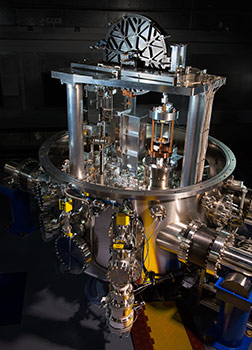Following on from Jon's comment above, this is from the NIST Website (Dated June 21, 2016), discussing a more accurate measure of the kilogram, and the involvement of Planck's constant.
A high-tech version of an old-fashioned balance scale at the National Institute of Standards and Technology (NIST) has just brought scientists a critical step closer toward a new and improved definition of the kilogram. The scale, called the NIST-4 watt balance, has conducted its first measurement of a fundamental physical quantity called Planck’s constant to within 34 parts per billion – demonstrating the scale is accurate enough to assist the international community with the redefinition of the kilogram.
Planck’s constant lies at the heart of quantum mechanics, the theory that is used to describe physics at the scale of the atom and smaller. Quantum mechanics began in 1900 when Max Planck described how objects radiate energy in tiny packets known as “quanta.” The amount of energy is proportional to a very small quantity called h, known as Planck’s constant, which subsequently shows up in almost all equations in quantum mechanics. The value of h – according to NIST’s new measurement – is 6.62606983x10-34 kg∙m2/s, with an uncertainty of plus or minus 22 in the last two digits.
The NIST-4 watt balance has measured Planck’s constant to within 34 parts per billion, demonstrating that the high-tech scale is accurate enough to assist with 2018’s planned redefinition of the kilogram.

